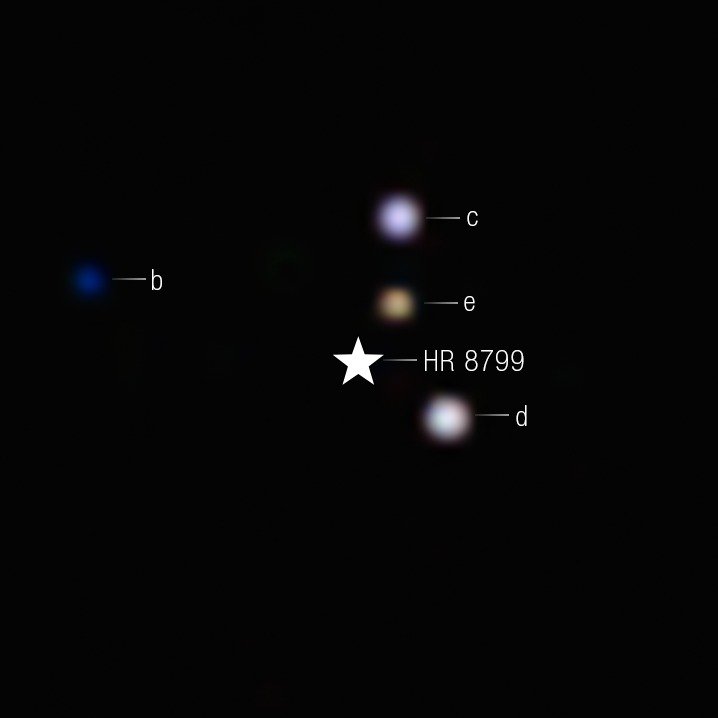Washington. NASA’s James Webb Space Telescope has made a significant discovery, taking the first direct images of carbon dioxide outside the solar system. The feat was found on a planet located in a planetary system of a star system called HR 8799. The discovery has led scientists to theorize that the process of formation of this planet may have been similar to the formation of Jupiter and Saturn in our solar system, which happened through core accretion. This demonstrates the technical capability and vision of James Webb, which has made one of the most important discoveries ever. This breakthrough was possible due to Webb’s advanced coronagraph, a unique technology. This coronagraph blocks sunlight, as happens during a solar eclipse, allowing distant planets to be seen clearly. This technique allowed scientists to focus on specific infrared wavelengths, revealing the planet’s atmospheric gases and other features.
Detection of carbon dioxide and other chemical elements
The images taken by James Webb showed a strong presence of carbon dioxide. “By looking at these features of carbon dioxide, we have established that significant amounts of heavier elements such as carbon, oxygen and iron are present in the atmospheres of these planets,” said William Balmer of Johns Hopkins University. This discovery allowed scientists to confirm that these planets formed through core accretion, similar to the formation of planets in our solar system.
Characteristics of the HR 8799 star system and planets
The HR 8799 star system, which is only 30 million years old, is much younger than our solar system. Its planets are still emitting heat from their formation, giving off ample infrared light. This type of emission has given scientists a unique opportunity to study the formation mechanisms of these planets and compare them with other stars and brown dwarfs.
Methods of planet formation
From a science perspective, planets form through two major processes: core accretion and disk instability. In core accretion, solid cores slowly accrete gas, as happened in the formation of the planets in our solar system. The other process, disk instability, involves massive objects falling rapidly from a cold disk. By studying these two formation models, scientists are trying to understand the diversity of planets. This discovery suggests that we can gain a better understanding of other exoplanet systems, and more accurately identify the state of our own solar system. “We want to take pictures of other solar systems and see how similar or different they are from our own solar system,” Balmer said. This will help us understand how strange or how normal our solar system is, and could lead to new perspectives on the origins and existence of life.









